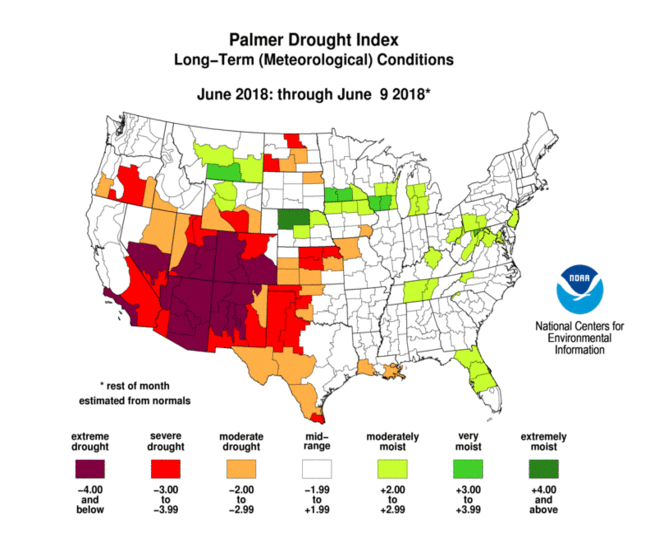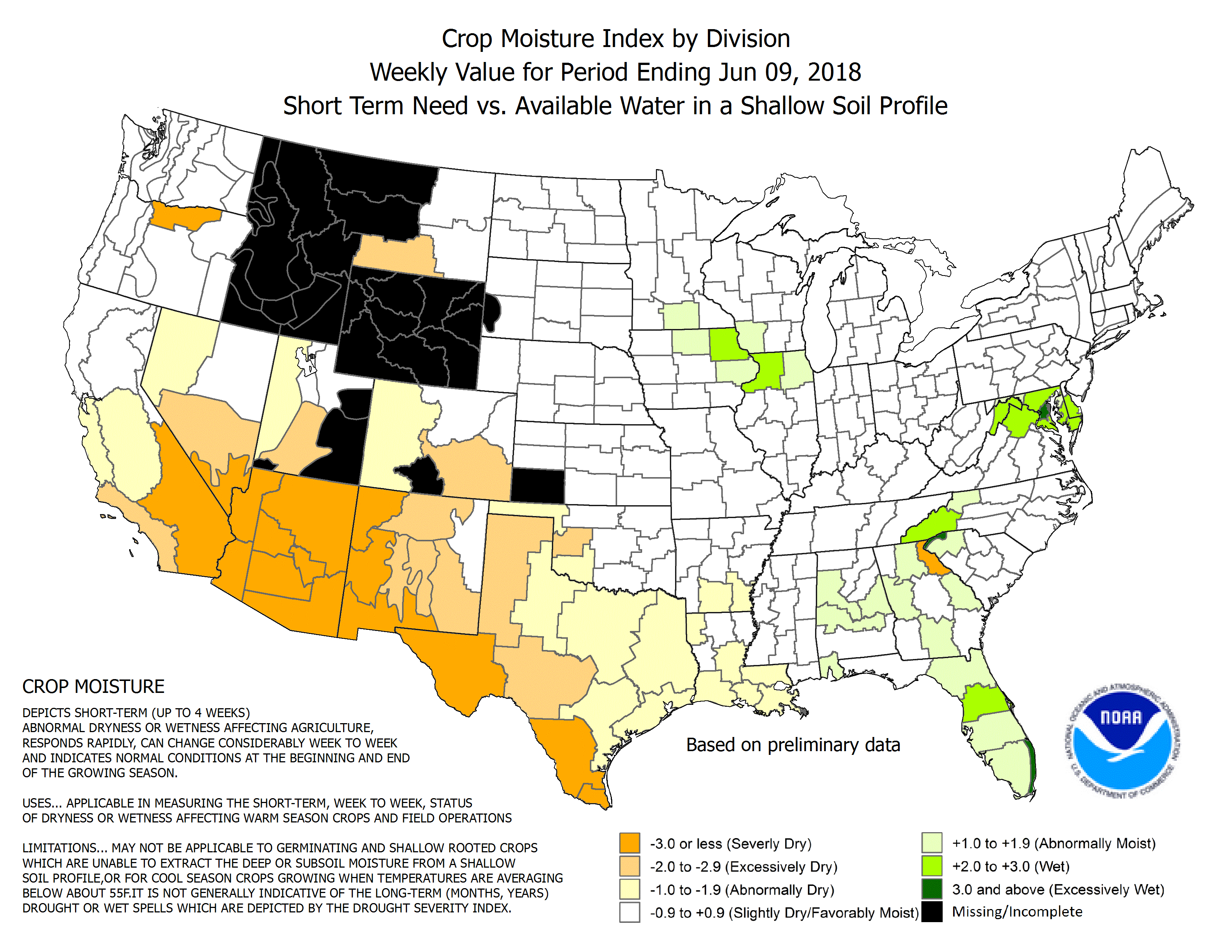With 94 percent of the corn emerged, USDA rates the condition in the 18 states it reports at 77 percent good/excellent and jut 4 percent poor/very poor. Emergence is 2 to 6 percent ahead of average in our service states and good/excellent ratings range from 60 in Kansas to 86 in Nebraska, while the bottom categories range from 1 percent (Nebraska) to 7 percent (Kansas). The worst crop seems to be in Texas, where 19 percent is in the bottom categories, followed by North Carolina and Missouri, with 17 and 14 respectively in poor/very poor condition.
Soybeans are now 93 percent planted, compared with an average 85 percent. Kansas, at 89 percent complete, is 22 points ahead of average; the other states in our service area all are ahead of average and all are at least 96 percent finished. Emergence also is considerably ahead, at 83 percent vs. an average 69 percent in the 18 states.
USDA rates soybean condition at 74 percent good/excellent and just 4 percent poor/very poor. Kansas ranks lowest in our service area, at 56 percent good/excellent and 6 percent poor/very poor. Nebraska’s crop holds the top spot -- 87 percent in the top categories and only 1 percent in the bottom categories.
Grain Sorghum
As with the other crops, sorghum planting is ahead of schedule, at 80 percent planted and 16 percent headed, compared with 68 percent and 12 percent on average. Half the sorghum crop is rated good/excellent in the 11 reported states. Nebraska and South Dakota sorghum is rated 87 and 88 percent in the top categories with none rated poor/very poor. Kansas ratings are 57 percent in the top categories and 3 percent in the bottom.
Sunflowers
Sunflowers are 12 points ahead of the 60 percent average plantings for this time of year in the four reported states. Kansas, at 53 percent, and South Dakota, at 64 percent, are both 15 points ahead of average.
Spring wheat
South Dakota’s spring wheat has emerged and 43 percent is rated good/excellent compared to 9 percent poor/very poor. That is the worst rating of the six reporting states, which average 70 percent and 3 percent, respectively.
Winter wheat
Fourteen percent of the winter wheat had been harvested at the start of the week, 4 points ahead of average. The states in our service area are right on their averages.
Condition is rated 38 percent good/excellent and 35 percent poor/very poor in the 18 states USDA assesses. Almost half of the Kansas crop – 47 percent – is in the lowest two categories and only 16 percent is good/excellent.
Moisture
The long-term Palmer Drought Index as of June 9 shows a few moist areas but continued drought in the Southwest and Kansas. This explains the poor ratings and stressed crops in parts of our service region.

A look at the short-term need vs. available water shows most of the Corn Belt in a mostly balanced situation as of June 9, indicating crops may be getting by in the short term. The National Oceanic and Atmospheric Administration does note that this may not apply to seeds still in the germination phase, when roots are not yet well developed.


